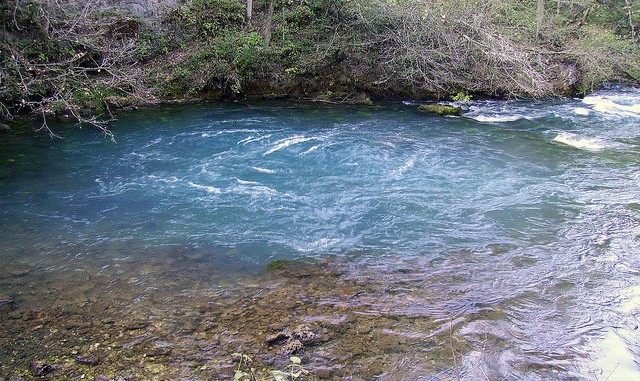
Recent studies have revealed that groundwater would have provided a ‘drought proof’ water supply and habitats for past hominin species that would have lasted hundreds of thousands of years, regardless of dry periods in East Africa.
Gil Ashley, a professor of Earth and Planetary Sciences at Rutgers University gave a talk in the Coykendell Science Building auditorium Tuesday, Feb. 16. The geological talk was a part of the Harrington STEM Lecture Series given to STEM students and the general public. The STEM lectures are held in the Coykendell Science Building auditorium on scheduled Tuesdays.
Ashley’s studies revealed that groundwater-fed springs in East Africa were probably the main source of fresh, potable water. In Africa, where the earth is recharged with moisture from precipitation, the moisture gets trapped on the highlands. Ashley said the moisture then infiltrates the groundwater and moves into a nearby basin, which is shielded from evaporation and can yield fresh year-round water.
Ashley said these freshwater wetlands created by the groundwater springs provided a source of food and safety for the inhabitants. By consuming the spring, the hominin species would have thrived and spread without concern of resource consumption.
“Utilization of such a circumstance would not have led to the competition and selective pressure of the hominin species from an evolutionary perspective,” Ashley said. “It would have also provided sites to aid the spread of hominin across the world.”
According to a study done in 2014 for groundwater modeling, groundwater-fed springs show endurance and therefore are a ‘drought free’ natural resource. This research was solidified when groundwater in the equator region, the highest evaporation area in the world, was protected.
The roots of spring research began over 50 years ago in Olduvai Gorge, Tanzania where two archeologists, Louis and Mary Leakey, discovered a fossil in 1959. This invited parties to begin a search for many other findings. Two years later, a bone bed beneath a solid blanket of volcanic ash revealed 2500 stone tools, 3500 fossil bones and 48 large mammals.
This discovery revealed two different species in the bed; the Zinj (Paranthropus), the categorized name of the fossil found by the Leakeys, and the Homo Habilis. The discovery of these two species revealed to archeologists a sophisticated foraging and food access hominin behavior.
This behavior was the gathering of materials and caucuses into the bone bed area, revealed to be a consumption den for the hominin after accumulating the dead animals for intake to avoid competing predators. What surprised Ashley about bone bed was that it was located in the middle of the woodlands.
Studies of the hominin landscape led to a patchwork of plant types and natural resources. The eventual reveal of lively, organic soil in the woodland trees exposed to archeologists that the Zinj were in the middle of a larger landscape that provided wetlands, grasslands and forest patches to the hominin. It was a spring fueled landscape.
“The springs and wetland habitats could have provided ‘lifelong’ water supplies along the necklace of the Rift Valley basins,” Ashley said.
Ashley’s pitch to the audience was that the hominin could have been capable of migrating across the world. Judging from the landscape reconstruction, the hominin would have been able to space out the springs located at the bottom of the rift and move from one spring to the next.
Based on the research and findings, Ashley closed her talk by insinuating that the hominin could have used the springs as stepping stones up the Rift Valley and out of Africa. With that theory in mind, it is possible that the hominin could have moved on to the rest of the world. Our evolution could have been worlds different from what it is now.
